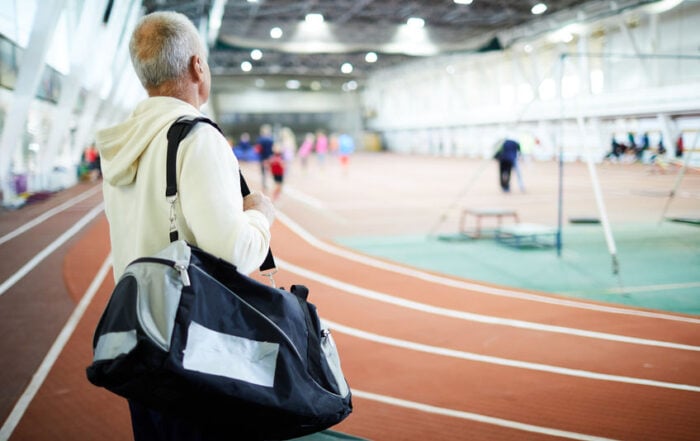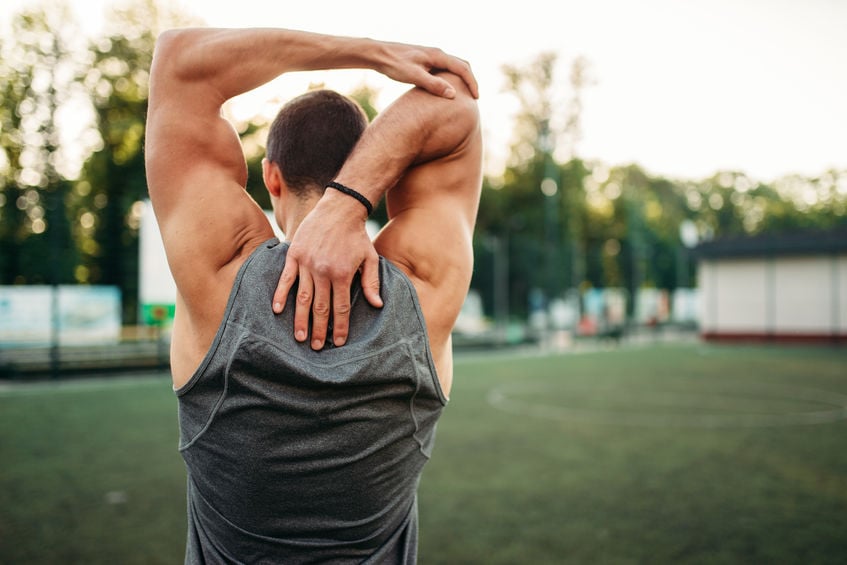Beware The Dreaded ACL Tear
The most famous football players, basketballers, and soccer stars know about ACL tears all too well. Young athletes should also be mindful of the injury. More than 200,000 ACL injuries happen each year. ACL tears also have an average healing time of 6 months or more. That means young athletes can miss out on crucial career opportunities without proper knee care.

Why is an ACL tear so career-threatening?
The anterior cruciate ligament or ACL is one of 4 ligaments that stabilize the knee. The ACL is at the dead center of the knee. Along with the PCL (posterior cruciate ligament), the ACL forms an X and runs from the thigh bone to the shin bone. Both are responsible for preventing the knee from going too far forward, back, and limits rotation. Without the ACL, jumping and changing direction is impossible. So when the ligament tears or pops, young athletes are out of commission. Even with reconstructive surgery, over the long-term, some athletes don’t feel the same. As the saying goes, prevention is better than cure. So with these 4 steps, young athletes can minimize the chances of getting a dreaded ACL tear.
1. You’re getting warmer
Many athletes feel tempted to get in the game without warming up. Stretching and warming up is crucial for preventing injuries. Orthopedic injuries like ACL tears are more likely if muscles are still cold. Take time before starting each sport to practice proper leg and knee stretches. This also applies to after the game. Stretching may seem like a chore. But the right warm-up and cool-down can prevent months of serious injury.
2. Learn to land better
ACL sprains and tears are more likely to happen when athletes land awkwardly. If the knee gets bent or twisted out of place when falling, ACL injures are more likely to happen. Young athletes should invest time in the gym, learning the proper mechanics of landing. Start with learning to land correctly on 2 feet, practicing from different heights. Use reverse box jumps, knees over feet, distributing weight evenly. Then, graduate to learning to land on a single leg. Don’t forget landing laterally too. Proper grounding can save and even extend an athlete’s career.
3. Don’t skip leg day
Strength is the most significant advantage an athlete has in staying injury-free. Learning to land is essential, but having strong legs to land on is just as critical. Young athletes who depend on leg strength and power should have a strength training regimen. Calf exercises, squats, and explosive plyometric exercises improve leg strength and balance. Single leg strength exercises help with balance and mobility. These exercises are important, but other muscle groups are useful too. Core exercises support the upper body and reduce stress on the knees. Glutes, hamstring, and quadriceps strength training support the knee even in hard collisions.
4. Be coachable
Young athletes should speak with coaches, physiotherapists, or specialists for constant advice on staying ACL injury-free. Make sure to take and implement the feedback from subject matter experts. Sports medicine can help check the current strength and health of knees and surrounding muscles. Using the right recommendations, the likelihood of avoiding sprains and tears improves significantly.
Stay in the game longer
ACL injuries aren’t slowing down. With high demands from young athletes, there’s just no way to avoid a freak collision or accident. But strengthening the ACL can reduce these contact injuries. The best benefit will come from lowering non-contact injuries. ACL injuries are an education issue as much as a contact issue. Focus on these 4 methods to protect that precious ACL today. If an injury does occur, speak with an orthopedic specialist to find the best treatment option.
Can Lower Back Pain Return After Spinal Surgery? 3 Lifestyle Changes To Get The Most Out Of Fusion
Minnesota Valley Valley Center2024-04-02T14:49:38-05:00April 15th, 2024|
Spinal surgery is an excellent solution for lower back pain, but symptoms can return. With lifestyle changes, patients can get the most out of fusion.
A New Lease On Life: Exploring How Robotic Total Joint Replacement Can Get You Active Again
Minnesota Valley Valley Center2024-03-24T17:38:47-05:00March 29th, 2024|
Robotic total joint replacement uses a robotic arm to replace the joint. This innovative approach allows a quick return to activities.
Restoring Dexterity: How Outpatient Carpal Tunnel Surgery Can Change Your Life
Minnesota Valley Valley Center2024-03-24T17:38:37-05:00March 15th, 2024|
After months of wrist and hand pain, carpal tunnel surgery may be needed. With outpatient options, restored dexterity with less pain and discomfort is possible.
More Articles from MVSC
April 15, 2024
Spinal surgery is an excellent solution for lower back pain, but symptoms can return. With lifestyle changes, patients can get the most out of fusion.
February 29, 2024
Rotator cuff tears can severely limit shoulder mobility. Surgery can relieve pain and improve mobility, allowing patients better reach.
January 15, 2024
Spinal conditions in the lower back may require a procedure called laminectomy. With MIS, patients have higher success rates.
December 21, 2023
Clavicle fractures are often treated non-surgically. The location and degree of damage can indicate whether collarbone surgery is needed.










